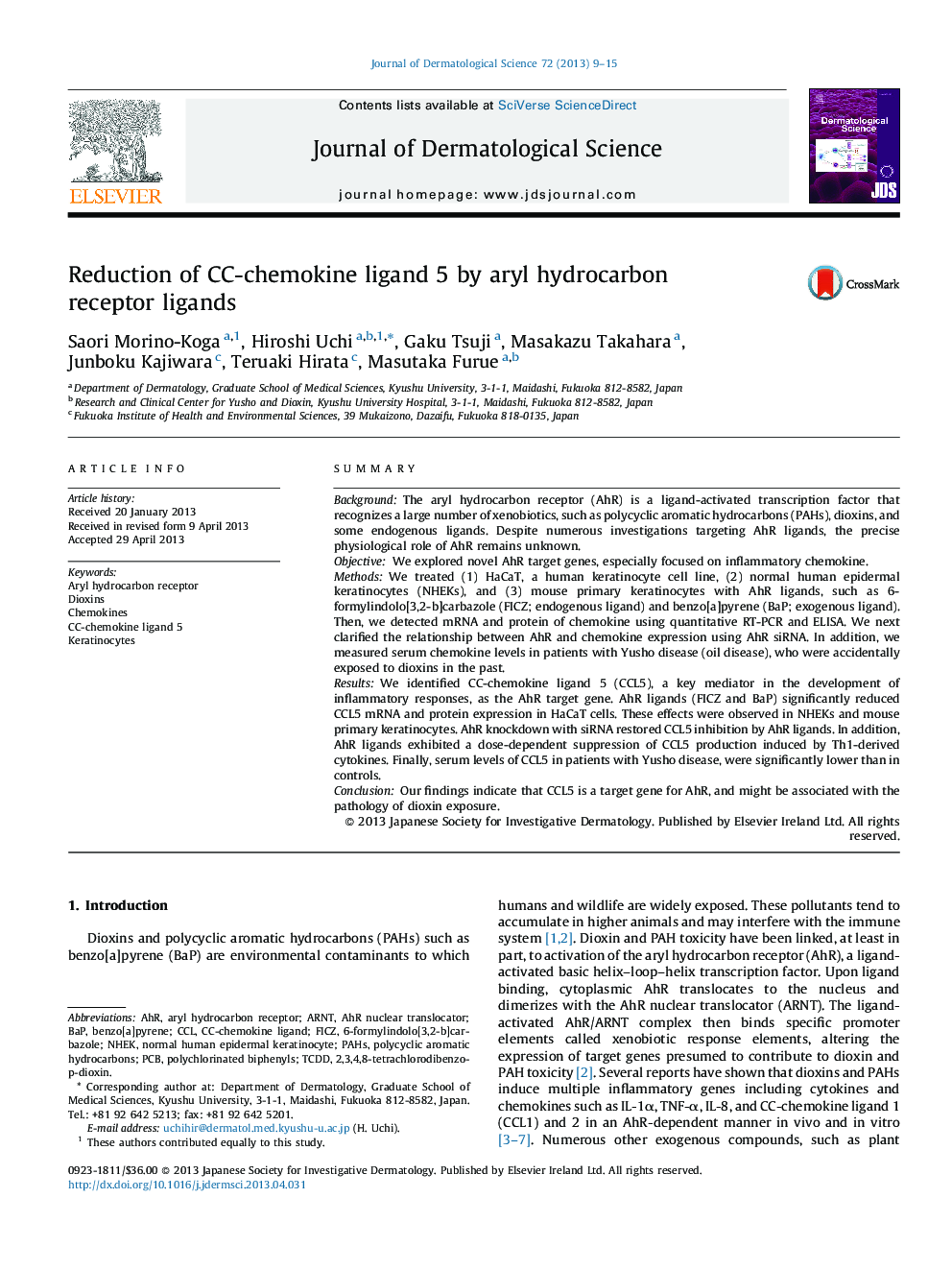| کد مقاله | کد نشریه | سال انتشار | مقاله انگلیسی | نسخه تمام متن |
|---|---|---|---|---|
| 3213009 | 1203213 | 2013 | 7 صفحه PDF | دانلود رایگان |

SummaryBackgroundThe aryl hydrocarbon receptor (AhR) is a ligand-activated transcription factor that recognizes a large number of xenobiotics, such as polycyclic aromatic hydrocarbons (PAHs), dioxins, and some endogenous ligands. Despite numerous investigations targeting AhR ligands, the precise physiological role of AhR remains unknown.ObjectiveWe explored novel AhR target genes, especially focused on inflammatory chemokine.MethodsWe treated (1) HaCaT, a human keratinocyte cell line, (2) normal human epidermal keratinocytes (NHEKs), and (3) mouse primary keratinocytes with AhR ligands, such as 6-formylindolo[3,2-b]carbazole (FICZ; endogenous ligand) and benzo[a]pyrene (BaP; exogenous ligand). Then, we detected mRNA and protein of chemokine using quantitative RT-PCR and ELISA. We next clarified the relationship between AhR and chemokine expression using AhR siRNA. In addition, we measured serum chemokine levels in patients with Yusho disease (oil disease), who were accidentally exposed to dioxins in the past.ResultsWe identified CC-chemokine ligand 5 (CCL5), a key mediator in the development of inflammatory responses, as the AhR target gene. AhR ligands (FICZ and BaP) significantly reduced CCL5 mRNA and protein expression in HaCaT cells. These effects were observed in NHEKs and mouse primary keratinocytes. AhR knockdown with siRNA restored CCL5 inhibition by AhR ligands. In addition, AhR ligands exhibited a dose-dependent suppression of CCL5 production induced by Th1-derived cytokines. Finally, serum levels of CCL5 in patients with Yusho disease, were significantly lower than in controls.ConclusionOur findings indicate that CCL5 is a target gene for AhR, and might be associated with the pathology of dioxin exposure.
Journal: Journal of Dermatological Science - Volume 72, Issue 1, October 2013, Pages 9–15